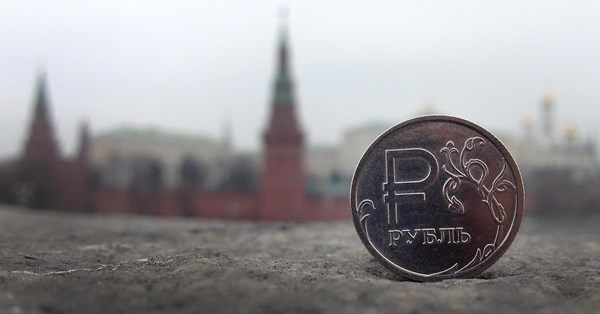China shows no desire to trade with Russia for rubles
The idea of abandoning the dollar for external trade with BRICS countries, actively proposed by the Russian government since it fell under sanctions from the West, still remains unrealizable.
Despite three years of negotiations with the central banks of the provisional bloc and the making of direct currency swap agreements, exporting companies in China and India still show no desire to transition to payment in rubles, according to a Central Bank statistic on the currency structure of foreign trade agreements, reports finanz.ru.
Compared to the level before the sanctions, the proportion of ruble-denominated import deals has fallen by a factor of nearly 1.5.
Whereas in 2013, 5.8% of import contracts with BRICS countries were made in rubles, last year only 3.7% were.
China, the largest supplier of goods from BRICS to Russia, reduced its share of contracts with payments in rubles from 3.9% four years ago to 2.7% last year.
Before the sanctions, 24.1% of shipments from India were paid for in the Russian currency. After 9 months of 2017, the share of ruble deals had dropped to 20.8%. The share of dollar settlements, on the other hand, rose from 61.8% to 66.9%.
With China, one of the problems is that bilateral trade is very seasonal: in the first half of the year, there is a surplus on the Russian side, but in the second half, on the Chinese side, Russian Deputy Finance Minister Alexei Moiseyev explained earlier. In such a situation, for normal operation it is important to have a developed capital market, i.e. speculators, who will buy yuans in the first semester and rubles in the second.
Attempts to create such a capital market have so far been unsuccessful: the yuan-ruble trade pair has been on the Moscow Exchange since 2010. However, the volume is “slightly more than nothing” according to Peter Trust investments director Mikhail Altynov: in the third quarter, there was a maximum of 50-60 million yuans per day. In 2015, the Moscow Exchange launched yuan futures, but the activity there is even less.
“In most countries, the dollar is used as the currency which supplements the reserves, and here the BRICS countries are no exception. The ruble is not on the list of such currencies, and on top of that, its exchange rate is very unstable with respect to the dollar,” leading AMarkets analyst Artem Deyev explained. The flow of hard currency into Russia which could cover the demand emerging for it depends 60% on the sale of oil, gas, oil products and metals.
Finally, those who sell goods and services for rubles will most likely have to buy something with them in Russia, the expert added.
